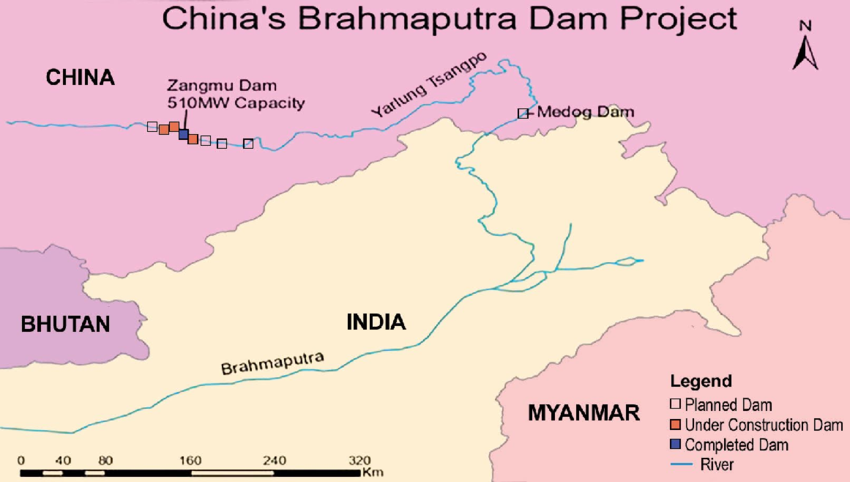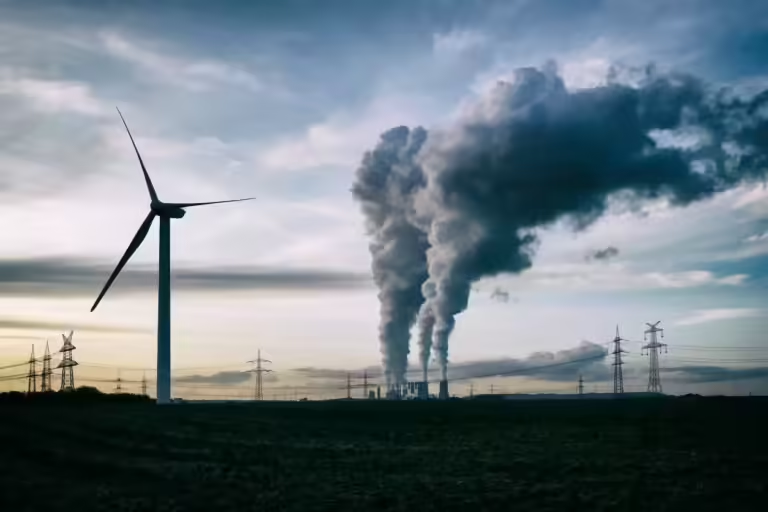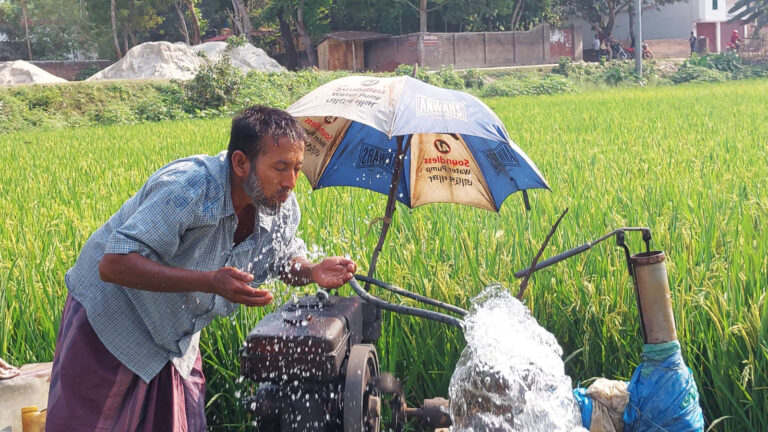
A river runs through it, but who controls the tap? Concerns about environmental catastrophe, and geopolitical power struggles have been raised by China’s ambitious plan of the megaproject to construct the largest hydropower dam in the world on the Yarlung Zangbo, the Brahmaputra in Bangladesh, and India.
The Megaproject
The project, known as “The project of the Century“, said by China premier, is the mega-dam project on the Yarlung Zangbo river (Brahmaputra) in Tibet, China. It is projected to be the world’s largest hydropower facility designed to have a 60,000 megawatt (MW) capacity. The project, which involves building five dams along a 50-km stretch, is estimated to cost $167 billion. First power generation is anticipated in the early-to-mid 2030s, according to Yahoo.co. This ambitious project, approved as part of China’s 14th Five-Year Plan, involves building a series of five cascade hydropower stations.
Beijing’s foreign ministry said on Tuesday that China considers the Yarlung Zangbo hydropower project a sovereign matter, and will use the dam to provide clean energy, and prevent flooding.
Megaproject -China’s Rationale
- Meeting Energy Demand, and Enhancing Energy Security :
China uses hydropower to meet rising energy demand, supporting industrial growth with a stable, domestic, and renewable electricity source.
By reducing reliance on imported fossil fuels, hydropower enhances national energy security, and shields the economy from global energy fluctuations.
Hydropower diversifies China’s energy mix, and balances wind, and solar intermittency, ensuring stable electricity supply, and reliable grid performance.
2. Economic, and Developmental Benefits :
Large hydropower projects stimulate regional economies by creating jobs, boosting infrastructure, and promoting development in less developed, rural regions.
They enhance river navigation, reduce shipping costs, and improve inland trade routes, strengthening economic connectivity, and overall domestic commerce growth.
China’s abundant hydropower resources, especially in the Yangtze Basin, are crucial for sustainable development, and long-term renewable energy expansion plans.
3. Addressing Environmental Concerns, and Climate Change :
Hydropower supports China’s carbon neutrality goals, and climate commitments by producing cleaner energy, and reducing harmful carbon emissions. Hydropower reservoirs provide essential water for irrigation, drinking, and water management across diverse industries, and geographic regions in China.
- Strategic, and Geopolitical Considerations :
China’s dams on transboundary rivers enable upstream water control, potentially affecting downstream nations, and raising regional water security concerns.
Hydropower projects in strategic regions like Tibet strengthen China’s geopolitical influence, and reinforce control over sensitive border areas.
Massive infrastructure achievements like the Three Gorges Dam showcase national pride, and highlight China’s leadership in engineering, and hydropower technology.

Fear of India, and Bangladesh on the Megaproject
The Yarlung Tsangpo becomes the Brahmaputra River as it leaves Tibet, and flows south into India’s Arunachal Pradesh, and Assam states, and finally into Bangladesh. The mega dam project, has raised concerns in India, and Bangladesh about the impact on their water, and food security. Concerns include population displacement, environmental disruption, and potential weaponization of water through flood, or drought control by China.
Earlier this month, Arunachal Pradesh Chief Minister Pema Khandu called the mega dam project a ticking “water bomb”, and warned that it could considerably dry up downstream Indian waters once completed.
The Green concerns
There are also environmental concerns about the irreversible impact of dam construction in the Yarlung Tsangpo gorge, where the river drops 2000 meters in elevation over a 50-kilometre stretch. The area is home to a national nature reserve, and is one of the country’s top biodiversity hotspots.
Building large dams in seismically active regions, such as the Tibetan Plateau, increases the risk of induced earthquakes, and landslides, posing significant safety hazards to nearby communities, and infrastructure. Dams control river flow, safeguard downstream areas from flooding, and lessen natural disaster impacts during periods of intense rainfall.
Beijing has said that there won’t be any adverse impact to downstream areas, and has promised to put in place measures to ensure safety, and environmental protection.
China’s ambitious plan for the Yarlung Zangbo River has turned into a hot spot for geopolitical unrest, and environmental issues. Time will tell whether this project sparks conflict, or ushers in a new era of clean energy.
There is no doubt that the world is keeping a close eye on the Brahmaputra’s future, and the precarious power dynamics in the area.
For more such informative articles, stay tuned at The World Times.



